Have you ever felt like your week is a chaotic whirlwind of responsibilities, leaving you breathless by Friday? Imagine a world where your days flow smoothly, where you have time for both work and relaxation, and where stress is a thing of the past.
This isn’t just a dream—it’s a reality I’ve achieved through my personal weekly planning routine. Join me as I share the secrets to transforming your week into a harmonious blend of productivity and peace.
Understanding the Importance of a Weekly Planning Routine
In today’s fast-paced world, it’s easy to feel overwhelmed by the sheer volume of tasks demanding our attention. But what if there was a way to manage it all without losing your sanity? That’s where a weekly planning routine comes into play, acting as a compass guiding you through the stormy seas of life.
Why Weekly Planning is Essential for Time Management
Time management is not just about squeezing more into your day; it’s about making the most of the time you have. A weekly planning routine helps you allocate your time effectively, ensuring that you focus on what truly matters.
By setting aside specific times for tasks, you can prevent the dreaded Sunday scaries and start your week with clarity and purpose.
To enhance your time management skills, try using digital tools like Asana or Trello. These platforms allow you to organize tasks efficiently and set reminders, ensuring nothing falls through the cracks.

The Connection Between Planning and Stress Reduction
Stress often stems from uncertainty and the feeling of being out of control. By establishing a weekly planning routine, you regain control over your schedule, reducing anxiety and promoting a sense of calm.
Knowing what lies ahead each week allows you to approach your tasks with confidence, turning potential stressors into manageable challenges.
Achieving Work-Life Balance Through Effective Planning
Balancing work and personal life can feel like walking a tightrope. However, a well-structured weekly planning routine ensures you allocate time for both professional duties and personal pleasures. By prioritizing tasks and scheduling downtime, you create a harmonious rhythm that supports both productivity and relaxation.

My Weekly Planning Routine: A Step-by-Step Guide
Let me take you through the process that has revolutionized my life, bringing order to chaos and serenity to stress.
Step 1: Reflecting on the Past Week
Reflection is the cornerstone of growth. At the start of each week, I take time to review the previous one. What went well? What could be improved? This practice not only highlights accomplishments but also identifies areas for improvement, setting the stage for a more productive week ahead.
Step 2: Setting Clear Priorities for the Upcoming Week
With a clear understanding of past successes and challenges, I establish my priorities for the coming week. This involves identifying key tasks that align with my long-term goals and ensuring they are given the attention they deserve.
When setting priorities, consider using the Eisenhower Matrix to categorize tasks by urgency and importance. This method helps you focus on what truly matters, avoiding distractions from less critical activities.

Step 3: Scheduling Recurring Tasks and Appointments
Consistency is key to maintaining momentum. I schedule regular tasks and appointments, such as meetings and personal commitments, at the same times each week. This creates a reliable framework within which I can organize other activities.
Step 4: Blocking Time for Important Tasks
Time blocking is a powerful technique that involves dedicating specific chunks of time to focused work. By reserving these blocks for high-priority tasks, I ensure that they receive the attention they need without interruptions.
| Task | Time Block |
|---|---|
| Project Development | 9:00 AM – 11:00 AM |
| Client Meetings | 1:00 PM – 3:00 PM |
| Personal Time | 5:00 PM – 6:00 PM |
Step 5: Incorporating Personal Time and Self-Care
A balanced life includes time for self-care and personal enjoyment. Whether it’s reading, exercising, or spending time with loved ones, I make sure to schedule these activities into my week, treating them with the same importance as work tasks.

Step 6: Reviewing and Adjusting Your Plan
Flexibility is essential in any plan. At the end of each week, I review my progress and adjust my schedule as needed. This ensures that I’m always aligned with my goals and ready to tackle new challenges as they arise.
Tips for Optimizing Your Weekly Planning Routine
Here are some additional strategies to enhance your planning routine, ensuring it remains effective and adaptable.
Utilizing Tools for Effective Planning
In today’s digital age, numerous tools are available to streamline your planning process. From calendar apps to task management software, these resources can simplify your routine and increase efficiency.

Creating a Master Task List for Clarity
A master task list acts as a central repository for all your tasks, both big and small. By keeping this list updated, you can easily identify priorities and ensure nothing is overlooked.
Implementing Time Management Techniques
Techniques like the Pomodoro Technique or time blocking can significantly enhance your productivity. Experiment with different methods to find what works best for you, and don’t hesitate to adjust as your needs change.
Consider setting a specific day for weekly planning, such as Friday afternoon or Sunday evening. This helps you enter the new week with a clear mind and a well-organized schedule.

Real-Life Examples and Anecdotes
Let’s explore how embracing a weekly planning routine can transform lives, drawing from personal experiences and stories of others who have found success through planning.
How Planning Changed My Life
For years, I struggled with managing my time, constantly feeling overwhelmed by the demands of work and life. Implementing a weekly planning routine was a game-changer. It allowed me to regain control, reduce stress, and achieve a healthier work-life balance. Now, I approach each week with confidence and clarity.
Success Stories from Others Who Embrace Planning
Many individuals have experienced profound transformations by adopting a structured planning routine. From increased productivity to enhanced well-being, the benefits are numerous. These stories serve as inspiration for anyone seeking to improve their time management and reduce stress.

Common Challenges and How to Overcome Them
While a weekly planning routine offers numerous benefits, it’s not without its challenges. Let’s address some common obstacles and strategies to overcome them.
Dealing with Procrastination and Overwhelm
Procrastination and feelings of overwhelm can derail even the best-laid plans. To combat these issues, break tasks into smaller, manageable steps and celebrate each achievement along the way.

Maintaining Flexibility in Your Routine
Life is unpredictable, and plans may need to change. Maintaining flexibility in your routine allows you to adapt to unforeseen circumstances without losing sight of your goals.
If you find yourself frequently adjusting your schedule, consider building buffer time into your routine. This extra time can accommodate unexpected tasks or delays, reducing stress and keeping you on track.
Final Thoughts on Your Weekly Planning Journey
Embarking on a journey to establish a weekly planning routine is a powerful step toward a more organized, stress-free life. By prioritizing tasks, managing your time effectively, and maintaining flexibility, you can transform your week into a balanced blend of productivity and relaxation. Remember, the key is consistency—stick with it, and the rewards will follow.





